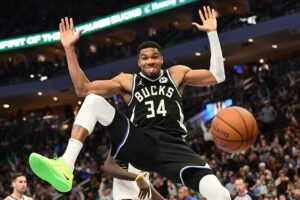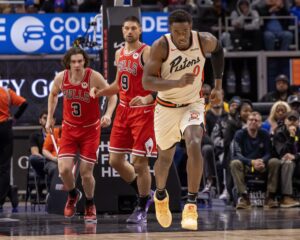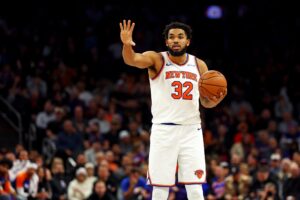Bubbles in college basketball are usually discussed in February and March. These conversations usually involve debating which group of mediocre power conference teams deserves a chance to play in the NCAA Tournament. However, a college basketball bubble may be needed to play the upcoming season. The idea was officially recognized by NCAA President Mark Emmert on Thursday, giving college basketball fans hope.
Mark Emmert Endorses College Basketball Bubble
The bubble concept for college basketball has picked up steam in recent weeks. Last Word on Hoops proposed the idea for non-conference games last month. Emmert, in an interview on NCAA.com, gave the idea some life, especially for the NCAA Tournament.
“Starting with 64 teams is tough,” Emmert said. “32, okay, maybe that’s a manageable number. 16, certainly manageable. But you’ve got to figure out those logistics. There’s doubtlessly ways to make that work.”
Emmert noted that they have already been working on figuring out the logistical and financial proceedings for the concept.
“If we need to do a bubble model and that’s the only way we can do it, then we’ll figure that out,” he said.
Furthermore, he pointed out the importance of having flexibility when exploring all possible options.
https://twitter.com/NicoleAuerbach/status/1294053478986330112?s=20
“We’re talking, of course, with our media partners pretty constantly now about what flexibility they would have and we would have,” Emmert said. “We’d love nothing more than to hold the current dates constant…we’re hopeful we can do that, but we are looking at alternatives.”
Bubble Idea Picking Up Steam
Numerous proposals for a college basketball bubble have been popping up all over the internet. Apparently, college basketball teams received their first, real proposal out of Houston, Texas. According to ESPN’s Jeff Borzello, Rhossi Carron has sent a proposal to at least 50 programs.
Carron’s idea involves bringing 20 teams to the bubble, splitting them into two, ten-team divisions. Teams would quarantine on campus for a week after the student body had left and then three days in the bubble after arriving. Testing would occur at this point and continue every other day, with daily temperature checks. The only acceptable modes of transportation to the proposed event would be a charter bus or plane. Ideally, games would be played throughout the first three weeks of December, allowing for conference play to still begin in January.
ESPN’s Myron Medcalf also reported that Kentucky’s John Calipari seems to be on board for an NCAA Tournament bubble:
John Calipari on @ESPNRadio tonight's The Intersection with @clintonyates and @elleduncanESPN: "We can play the NCAA tournament in a bubble. Instead of it being weeks on weeks long, maybe it’s short. You lose, you’re out of the bubble. You go home."
— Myron Medcalf (@MedcalfByESPN) August 14, 2020
It is safe to assume that Calipari is saying what plenty of other coaches are thinking at the moment. College sports fans across the country are still reeling from the decisions made regarding football by the Big Ten and Pac-12 earlier this week. The hope is that the folks involved with college basketball can come together and avoid the chaos that has ensued following the conflicting reports regarding the feasibility of playing football this fall amid the pandemic.
What It Really Means
Emmert’s comments and Carron’s proposal are a step in the right direction for making a college basketball bubble a reality. However, there is still a long way to go. Luckily, the NCAA has time, as the first day of scheduled games is on November 10th. Logistics, finances, and cooperation are the biggest factors at play as talks about a bubble ramp up.
There’s still a good chance that some leagues will not want to take the risk of exposing their student-athletes to any chance of contracting the coronavirus. The Ivy and Patriot Leagues are examples of conferences that have been proactive in those kinds of decisions. Other leagues may not have the financial capabilities to ensure a safe environment for their members to play a season. This is why Emmert’s comments today are so important. Having conversations with all parties involved now, rather than one month before the season, hopefully, ensures that an educated decision can be made that puts the health and safety of players, coaches, staff members, and everyone involved with college basketball first.
It is a given that everybody wants to play. The NCAA needs to make sure it can be done safely.
Main Photo






